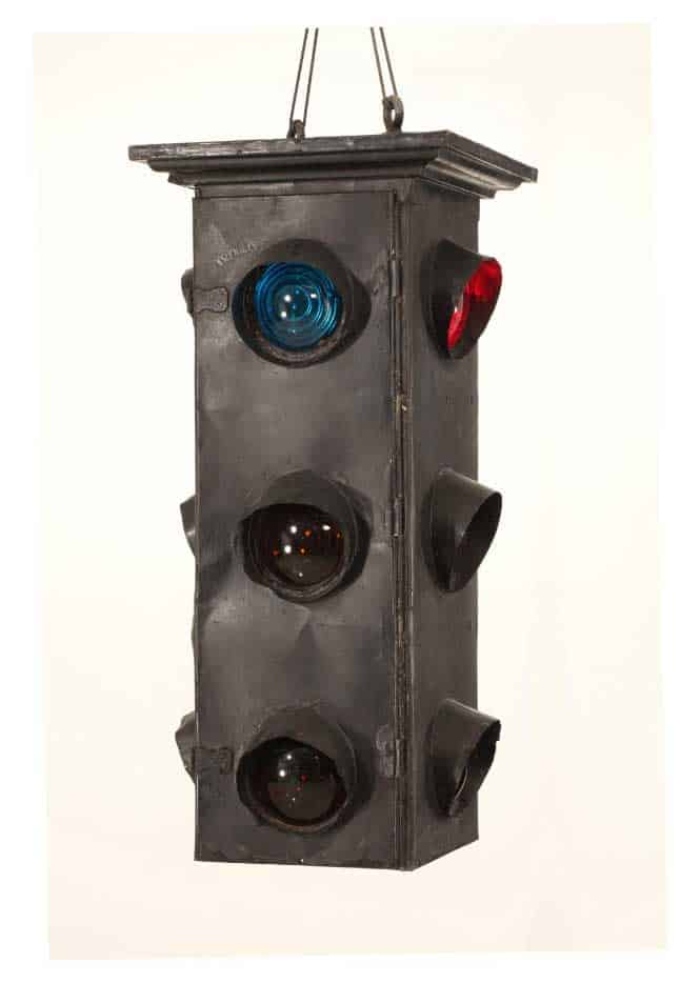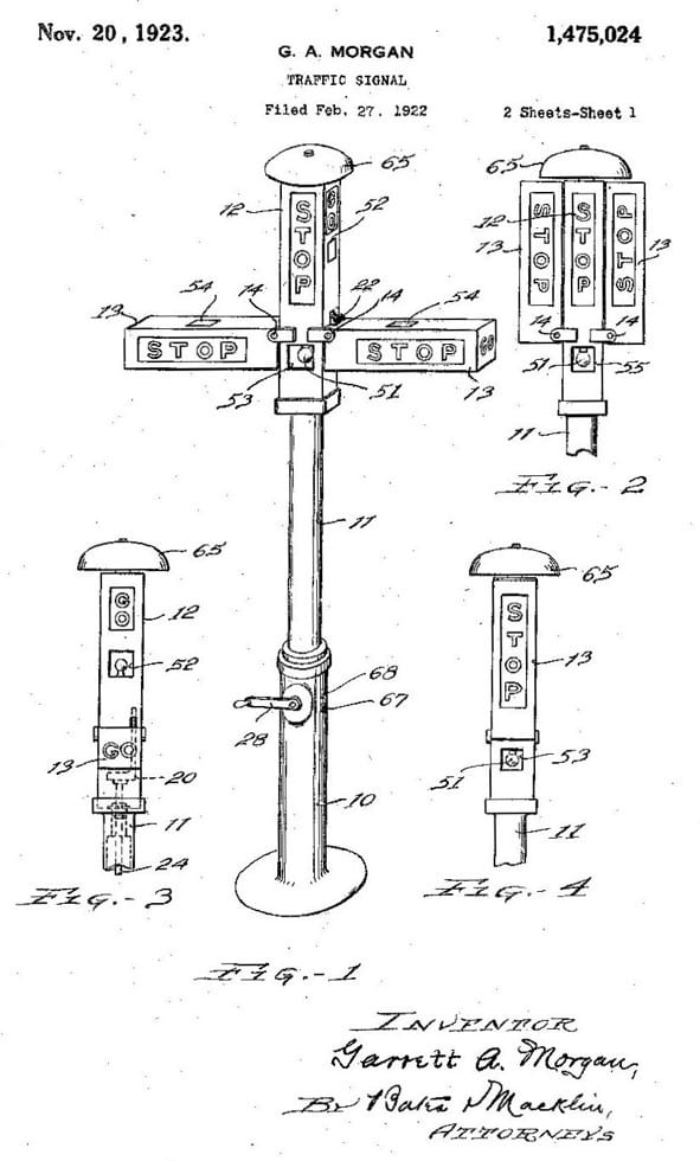
 A mechanical drawing of Knight's gas-powered traffic lights/Source
A mechanical drawing of Knight's gas-powered traffic lights/SourceIn London in the mid-19th century, people were killed and injured in traffic accidents by the hundreds. John Peake Knight, then a railway station manager, invented a manual gas-powered colored lighting system for horse carriage traffic control. In the system, red meant "stop" and green meant "go."
Knight’s traffic light was installed on December 9, 1868, near Great George and Bridge streets. This light was 22 feet tall, and it had 3 semaphore arms that swung up horizontally or dropped at a 45-degree downward angle. It was operated with a lever by an officer of the law and it was lit at night. But after several months, a gas leak caused an explosion that injured the officer who was operating the semaphore. Thus the revolutionary invention of traffic lights fell out of public favor, not to be used for four decades.
 Wire's electric-powered traffic lights/Source
Wire's electric-powered traffic lights/Source
The invention of Ford's Model T in 1908 brought about mass production of automobiles, and by 1912, the automobile took over the carriage as the main means of transportation. That year, Lester Wire, a police officer in Salt Lake City, Utah, invented the electric-powered traffic light. Many other versions of traffic lights popped up around the United States. In 1914, James Hogue took Wire’s electric traffic light and added to it a buzzer that would warn drivers of the changing of lights. Hogue's traffic lights could also be controlled by fire stations and police in cases of emergency.
 Pott's 4-way traffic lights/Source
Pott's 4-way traffic lights/SourceWilliam Potts invented the first four-way tri-color traffic light in 1920. The system was installed in Detroit, Michigan. However, Garrett Morgan, a son of slaves who moved to Cleveland in the 1980s and became a prosperous inventor and businessman, was the first to file a patent on a 3-color traffic light. Morgan’s traffic light used handles that go up and down, while Pott's traffic light resembled the modern version.
With the explosion of new inventions and innovations in the field of traffic control, there was a need for standardization. The federal highway administration created the manual on uniform traffic control devices in 1935, setting uniform standards for traffic signals. The standard required all traffic lights to use red, yellow, and green light indicators. This video illustrates the experience of driving in the late 1930s:
By the 1950s, pressure plates installed under intersections allowed for the full computerization of traffic lights. Toronto, Ontario became the first city to have fully computerized traffic control in 1963.
 William's patented tri-color traffic lights/Source
William's patented tri-color traffic lights/SourceThe first traffic lights were used at train stations. The color red, which inherently signals danger, signifies "stop." It has the longest wavelengths, thus it can be seen from the longest distance. Green meant "proceed with caution," much like today’s yellow light, and a bright white light signaled "go."
The white light was confusing and hazardous, so green took over to signal "go," while yellow was replaced as the signal for "caution" because of its high visibility.
In some cities in the US, there is a small blue light on top of traffic lights, that can be seen from every angle of an intersection. This is a service light for police officers. It flashes off at the same time as the red light, helping officers spot drivers who cross at a red light.
The green light in Japan may appear blue to some people. While the specific hue they use is different from that in the rest of the world, there is also a psychological component to what may seem like a color difference. This bonus video explains this phenomenon: